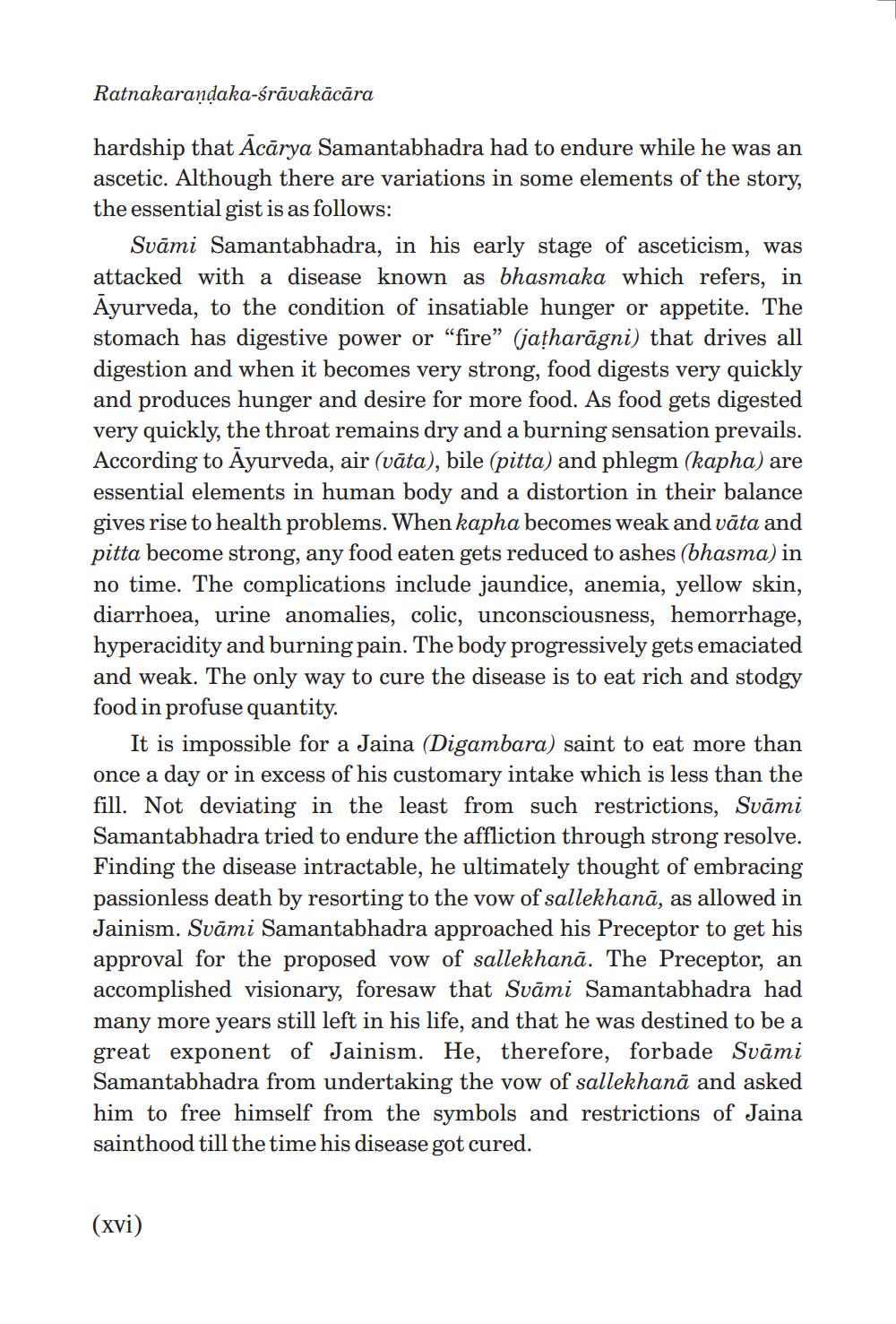________________
Ratnakarandaka-śrāvakācāra
hardship that Ācārya Samantabhadra had to endure while he was an ascetic. Although there are variations in some elements of the story, the essential gist is as follows:
Svāmi Samantabhadra, in his early stage of asceticism, was attacked with a disease known as bhasmaka which refers, in Ayurveda, to the condition of insatiable hunger or appetite. The stomach has digestive power or "fire” (jațharāgni) that drives all digestion and when it becomes very strong, food digests very quickly and produces hunger and desire for more food. As food gets digested very quickly, the throat remains dry and a burning sensation prevails. According to Ayurveda, air (vāta), bile (pitta) and phlegm (kapha) are essential elements in human body and a distortion in their balance gives rise to health problems. When kapha becomes weak and vāta and pitta become strong, any food eaten gets reduced to ashes (bhasma) in no time. The complications include jaundice, anemia, yellow skin, diarrhoea, urine anomalies, colic, unconsciousness, hemorrhage, hyperacidity and burning pain. The body progressively gets emaciated and weak. The only way to cure the disease is to eat rich and stodgy food in profuse quantity.
It is impossible for a Jaina (Digambara) saint to eat more than once a day or in excess of his customary intake which is less than the fill. Not deviating in the least from such restrictions, Svāmi Samantabhadra tried to endure the affliction through strong resolve. Finding the disease intractable, he ultimately thought of embracing passionless death by resorting to the vow of sallekhanā, as allowed in Jainism. Svāmi Samantabhadra approached his Preceptor to get his approval for the proposed vow of sallekhanā. The Preceptor, an accomplished visionary, foresaw that Svāmi Samantabhadra had many more years still left in his life, and that he was destined to be a great exponent of Jainism. He, therefore, forbade Svāmi Samantabhadra from undertaking the vow of sallekhanā and asked him to free himself from the symbols and restrictions of Jaina sainthood till the time his disease got cured.
(xvi)




